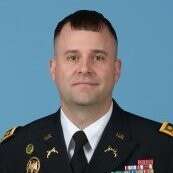Speakers
4 speakers
Date & Time
On Demand
Webinar
Duration: 1 hour
Cost: No Fee
The U.S. armed force operate jointly, not only with one another but also with allies’ and other nations’ armed forces. Data and information sharing enable any joint operation. When the sharing goes international, the challenges of interoperability and communications protocols multiply. That’s why, under the Joint All-Domain Command and Control project – to which each U.S. service will contribute – the Defense Department also has an initiative to modernize international C2.
The Mission Partner Environment, as stated in the JADC2 strategy, supports joint force commanders “establish and maintain a common understanding of the operational environment through shared situational awareness with mission partners.”
Work is proceeding from space the seas, panelists in a special Federal News Network panel explained. MPE is both a concept and a set of specific development projects all aimed at improving the information sharing of multi-nation operations.
“The mission partner environment, we look at as a framework that enables us to be able to work with our mission partners,” said Lt. Col. Dale Verran, chief of the Army’s Unified Action Partner Interoperability Mission Command Center of Excellence. “And, of course, the mission partner environment has several other components of it as well. It all centers around interoperability.”
MPE, Verran said, is much more than a technical requirement or capability. It encompasses procedures, common training tactics, “as well as the trust that is developed to actually make an effective environment that allows us to fight effectively and cohesively with our partners.”
To the Air Force and Space Force, an important component within the MPE framework is what Air Force Col. Carlos Perez Mendez called a unified data library (UDL). The library is also a key element in the Air Force’s Advanced Battle Management System, which the Air Force is developing as its eventual contribution to JADC2.
Mendez at the moment works at Space Force in a job called individual mobilization “augmentee.” He said the two services consider space assets, combined with partner collaboration in space, as a “symmetric advantage our competitors can’t match.”
The challenge for industry lies in matching technical capabilities with the with DoD’s policies for MPE, said Eric Tapp, senior executive for business development at GDIT’s Defense Division.
“We have zero trust. We have encryption. We have the ability to manipulate applications to ensure interoperability across your different networks in vast distances. A lot of the technology components are there,” Tapp said. Industry’s challenge becomes “understanding the environment so that we can tune those components to meet current needs.”
Interoperability: Easy to say
MPE above all requires flexibility and adaptability, because no two missions will necessarily pull in the same partners, panelists said. For instance, operating in Asia with Asian nations as mission partners would require different policies, procedures and technical interfaces than operating in Europe with NATO allies.
“One of the things that we keep having to remind people that interoperability is easy to say, but it is not easily too easy to achieve,” Verran said. All of the parties involved, including contractors, must have a common and detailed understanding of what is critical for a particular mission, Verran said. If they don’t “set the right switches in the right configuration, they can actually undercut some of the interoperability, some of the exchanges that could support that operation and the information sharing.”
Mendez pointed to the need for artificial intelligence and machine learning to augment human understanding of which data sources to connect in order to give warfighters the situational information they need at a given moment.
Tapp said industry sees a rise in the number of MPE-related requests for information coming from Defense Department elements. The requests indicate “the Department is absolutely maturing its take on where this technology needs to go,” he said.
Many of the RFIs include a requirement for identity and credential access management (ICAM) capabilities.
“They’re really looking at taking a building block approach, because ICAM is a component and a critical component of a full zero trust architecture, Tapp said.
Panelists said that MPE, like the JADC2 project, will move along iteratively. It will shift from a network-centric approach to a data-centric approach. Mendez described the goal for the unified data library as a “hub and spoke model of connecting producers and consumers of data. It works by securely persisting data in a way that fits applications [for] end users who have multiple classification levels.” He cited as example Space Systems Command. It will use MPE’s (and JADC2’s) cloud-hosted, data-centric architecture to establish “permanent capability to directly ingest observation data from the space weather system, into the Space Force UDL.”
Verran said that, pursuant to MPE, the Army will continue to adapt to a recent rewrite of the manual for multinational operations. Learnings from that adaptation will “feed back into our leadership development as well as our training of U.S. soldiers, to get them to understand the environments and what is actually required for working with mission partners.”
Ultimately, Verran said, MPE will be a transparent capability from the point of view of the military’s combatant commands. For joint warfighters, “they’re there on the network, they’re getting the information, and they’re doing what they do to support the commander.”
Learning objectives:
- MPE overview
- MPE progress report
- Technological pieces the MPE creates
Stay tuned for part 3 of this series where Tom and his guests will discuss digital engineering.
Complimentary Registration
Please register using the form on this page or call (202) 895-5023.
Speakers

Col. Carlos Perez Mendez
Individual Mobilization Augmentee to the Space Force S3 and Lead to SecAF Operational Imperative 2, Space Force

Lt. Col. Dale Verran
Chief of the Unified Action Partner Interoperability Mission Command Center of Excellence
Army

Eric Tapp
Senior Executive for Business Development
Defense Division, GDIT

Tom Temin
Host, The Federal Drive
Federal News Network
Sponsors

Have questions or need help? Visit our Q&A page for answers to common questions or to reach a member of our team.
